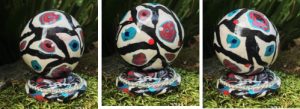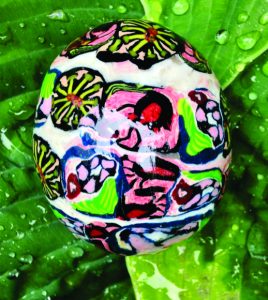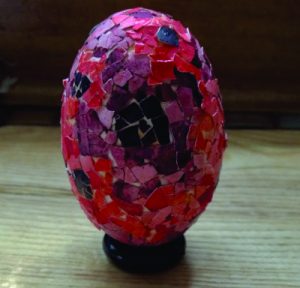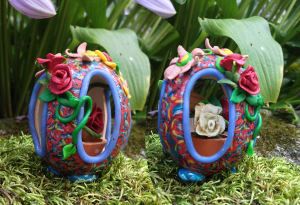These past 8 days have seen two cataract surgeries. In one sense awesome, and in another, disappointing just because man has not accomplished what nature has accomplished (beginning with the first photosensitive cells, developing quickly in the Cambrian Explosion period some 550 million years ago). I felt obliged to create something with polymer clay to remind me of the event, and show that I am grateful for the improved vision, yet know that what was lost was far more complex in design (yes, it had gone awry from occupational and environmental impact) than the lens that replaced it.
So here is an eyeball sculpture I call “ode to cataract surgery”. Notice the little metal shield that I used as the compound eyeball – stand, was a leftover part of the recovery routine to protect the position of my new lens during sleep.

Early on, eyes were just eye spots, then photo-cups, later developing into pin-hole cameras, then cameras with optical chambers and mechanisms for focus. Check out the wonderful wikipedia link HERE. What an astonishing range of adaptations emerged during evolution for the detection of reflective bodies in a range of wavelengths, for discrimination of various high and low light intensities, monitoring object motion and permitting real time adjustment in resolution. In most vertebrates the upside down and backwards evolution allowed for pigment cells to protect the rods and cones, an arrangement not present in many other eye types. And with this….I give you a magnificent quote ….“if numerous gradations from a simple and imperfect eye to one complex and perfect can be shown to exist, each grade being useful to its possessor, as is certainly the case; if further, the eye ever varies and the variations be inherited, as is likewise certainly the case and if such variations should be useful to any animal under changing conditions of life, then the difficulty of believing that a perfect and complex eye could be formed by natural selection, though insuperable by our imagination, should not be considered as subversive of the theory” (Charles Darwin). I love it, even though it is a very run-on sentence (ha ha) it is right on point.
Here are a couple other views of the various crazy eye canes I made with polymer clay to create an compound eyeball sculpture over an emptied, and mostly round chicken egg. Just fun. Yes, I think I will give it to my eye surgeon… who was also awesome, I wonder if he will laugh.









